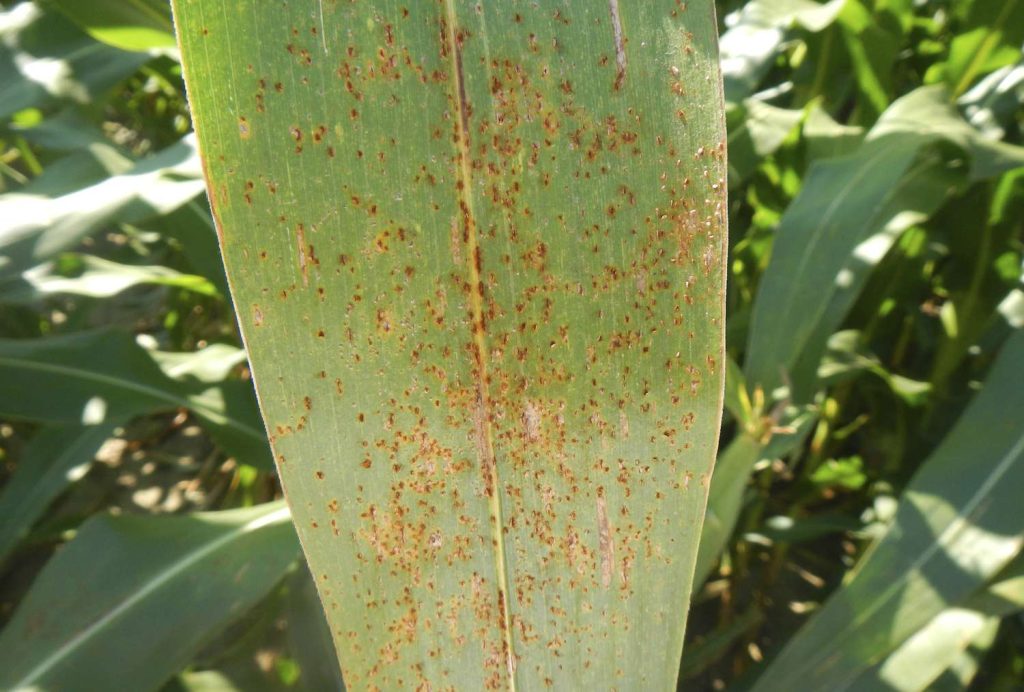Southern rust has quickly become a top concern for agronomists scouting fields this August. This “tropical disease” has infected corn in 20 states, according to the Crop Protection Network (CPN).
This disease favors high humidity and temperatures around 80°F, which many agronomists reported this growing season.
Positive 2025 Cases
The CPN has reported positive cases in the following states.
AlabamaArkansasFloridaGeorgiaIllinoisIndianaIowaKansasKentuckyLouisianaMichiganMinnesotaMississippiNebraskaOhioOklahomaSouth DakotaTennesseeTexasWisconsin
Minnesota
“Southern rust in 2024 was widespread at high levels of incidence and severity never before seen in Minnesota,” shared Angie Peltier, University of Minnesota (U of M) Extension crops educator, and Dean Malvick, U of M Extension corn and soybean plant pathology specialist, in an University of Minnesota Crop News article. “So far in 2025, southern rust is being detected in fields scattered across southern Minnesota.
“The severity and importance of any southern rust epidemic in Minnesota is a function of the timing of the arrival of inoculum from the south in relation to the growth stage of the crop,” said Peltier and Malvick. “Temperatures near 80°F and the wet 2025 growing season have combined to result in conditions favoring infection. The earlier that a southern rust epidemic begins, the greater the likelihood of it becoming a yield-limiting epidemic.”
Tim Dahl, agronomic service representative for Syngenta Crop Protection, has concerns about the disease.
“Standing water after big rains will impact areas of many fields,” Dahl said. “Southern rust in corn continues its progression north. Overall disease pressure will affect crops.”
The recent moisture could lead to more infections since the fungus that causes southern rust can infect a plant after approximately six hours of leaf wetness. Frequent rainfall can promote severe disease development, according to the CPN.
In Minnesota, corn was rated 2% very poor, 5% poor, 19% fair, 51% good, and 23% excellent.
Nebraska
“For the second straight year, southern rust has been the greatest corn disease threat in eastern Nebraska fields and continues to increase, especially in the lower corn canopy,” said Tamra Jackson-Ziems, a plant pathologist and Extension specialist at the University of Nebraska-Lincoln.
Travis Gustafson, agronomic service representative for Syngenta Crop Protection, considers disease to be one of the biggest yield threats this year in Nebraska.
“We are seeing another year of moderate to high southern rust pressure across the state,” said Gustafson. “Many growers have had to treat for rust as well as tar spot in places.”
The disease pressure and weather conditions are placing additional stress on the crop.
According to the USDA crop progress report, Nebraska corn was rated 1% very poor, 3% poor, 19% fair, 50% good, and 27% excellent for the week ending Aug. 18.
Wisconsin
In Wisconsin, Nick Groth, agronomic service representative for Syngenta Crop Protection, shared that late season disease is the number one yield threat.
“In corn, southern rust has me concerned,” said Groth. “We went from a few reports of southern rust in southern Wisconsin two weeks ago, to reports across the majority of the state and some fields in southern Wisconsin showing pretty heavy pressure last week.”
Farmers don’t typically see much southern rust in Wisconsin, shared Groth.
“Seeing it this early and progressing as rapidly as it has, makes me quite concerned that it could have a major impact on yield,” he said.
In Wisconsin, corn was rated 1% very poor, 4% poor, 13% fair, 56% good, and 26% excellent.
Iowa
Logan Dinkla, agronomic service representative for Syngenta Crop Protection, considered southern rust the number one threat in his territory and throughout the state of Iowa.
“There is a large range in severity based on fungicide treatments, hybrids, and location,” said Dinkla. “I have seen southern rust in every field that I’ve been in over the last month.”
The USDA rated Iowa corn 1% very poor, 2% poor, 11% fair, 56% good, and 30% excellent.

